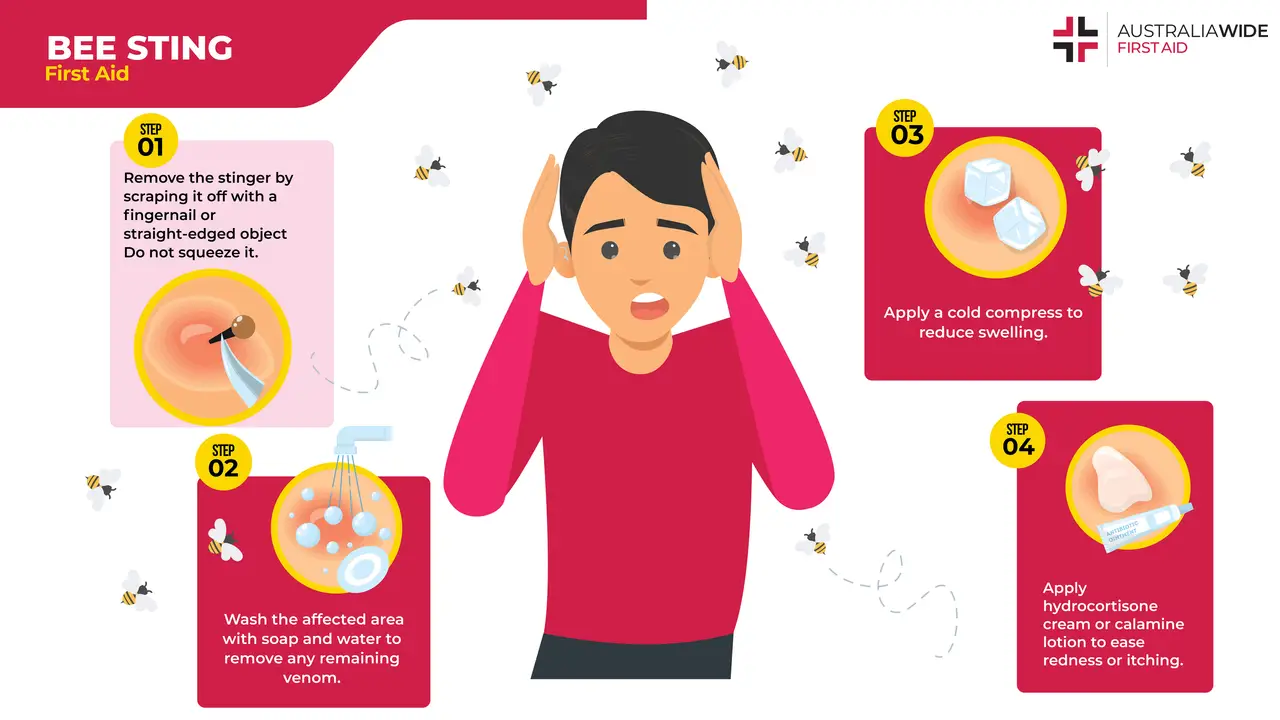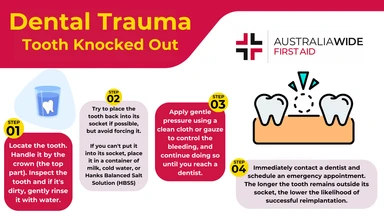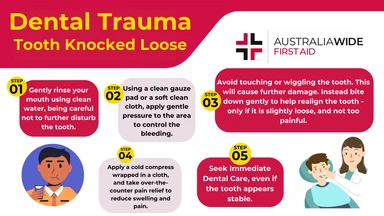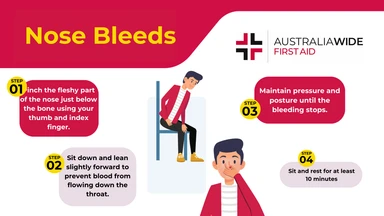First Aid Chart for Bee Sting


Bees are a type of winged insect that feed exclusively on nectar and pollen. They are found on every continent except for Antarctica.
Though one of Australia's most common bees, the European honeybee, wields a barbed stinger, they typically only sting humans when threatened or confused.
Bee stings generally only result in mild symptoms like localised pain and swelling, though they can trigger severe allergic reactions in some people.
Please see below for information on how to treat a bee sting with first aid.
Our charts can be downloaded and printed in A2 size or smaller.
Check out the video below for more information on how to provide first aid for a bee sting:
The following resources might also be of interest to you:
And for our full suite of downloadable resources, head to our First Aid Chart library.

August 8, 2023
A knocked-out tooth, also known as <dfn>dental avulsion</dfn>, is a dental emergency that demands immediate attention. This downloadable chart details the initial first aid you should complete while seeking a dentist.

July 27, 2023
Accidents happen, and one of the common dental emergencies people may face is knocking a tooth loose. This downloadable chart details the initial first aid you should complete while seeking a dentist.

July 31, 2023
Nose bleeds are common, and treating them shouldn't be a concern. This handy chart gives you the steps to follow.